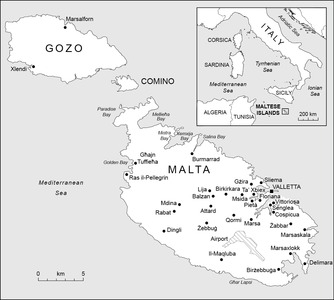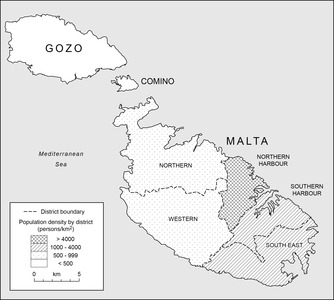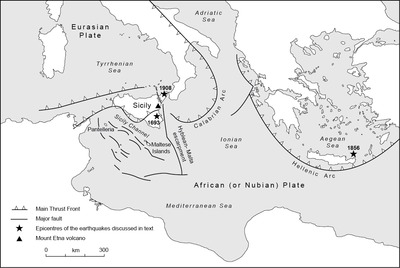Main, Geoff and Schembri, John and Gauci, Ritienne and Crawford, Kevin and Chester, David K. and Duncan, Angus (2018) The Hazard Exposure of the Maltese Islands. Natural Hazards, 92 (2). pp. 829-855. ISSN 0921-030x
|
Text
Manuscript.docx - Accepted Version Download (92kB) |
|
![Fig 1 Settlements.png [thumbnail of Fig 1 Settlements.png]](https://hira.hope.ac.uk/2380/2.hassmallThumbnailVersion/Fig%201%20Settlements.png)  Preview |
Image
Fig 1 Settlements.png - Accepted Version Download (177kB) | Preview |
![Fig 2 Population density.png [thumbnail of Fig 2 Population density.png]](https://hira.hope.ac.uk/2380/3.hassmallThumbnailVersion/Fig%202%20Population%20density.png)  Preview |
Image
Fig 2 Population density.png - Accepted Version Download (293kB) | Preview |
![Fig 3 Tectonic Setting.png [thumbnail of Fig 3 Tectonic Setting.png]](https://hira.hope.ac.uk/2380/4.hassmallThumbnailVersion/Fig%203%20Tectonic%20Setting.png)  Preview |
Image
Fig 3 Tectonic Setting.png - Accepted Version Download (172kB) | Preview |
Preview |
Image
Fig 4 Geology.tif - Accepted Version Download (427kB) | Preview |
Preview |
Image
Fig 5 Principal Catchments.tif - Accepted Version Download (346kB) | Preview |
Abstract
International comparisons of disaster risk frequently classify Malta as being one of the least hazard exposed countries. Such rankings may be criticised because: (1) they fail to take into account historic increases in population and its seasonal variation; (2) they are based on inadequately researched and incomplete historical catalogues of damaging events and (3), for small island states like Malta, they do not take into account the implications of restricted land area, which can be disproportionately impacted by even small hazardous events. In this paper, we draw upon a variety of data to discuss disaster risk in the Maltese Islands. In particular, the notion that Malta is one of the ‘safest places on earth’ is not only misleading, but also potentially dangerous because it engenders a false sense of security amongst the population. We argue that Malta is exposed to a variety of extreme events, that include: the distal effects of major earthquakes originating in southern Italy and Greece, plus their associated tsunamis; major ash producing eruptions of Mount Etna (Sicily), and their putative impacts on air transport; storm waves; coastal/inland landslides; karstic collapse; flooding and drought. In criticising international rankings of the islands’ exposure, we highlight the issues involved in formulating hazard assessments, in particular incomplete catalogues of extreme natural events. With Malta witnessing swelling resident, seasonal (i.e. tourist) plus foreign-born populations, and increases in the urban area, further research into hazards is required in order to develop evidence-based policies of disaster risk reduction (DRR).
| Item Type: | Article |
|---|---|
| Additional Information and Comments: | This is the author's version of an article that was accepted for publication in Natural Hazards. The final version is available at https://link.springer.com/article/10.1007/s11069-018-3227-xhttps://link.springer.com/journal/11069 |
| Faculty / Department: | Faculty of Human and Digital Sciences > School of Computer Science and the Environment |
| Depositing User: | David Chester |
| Date Deposited: | 21 Feb 2018 11:21 |
| Last Modified: | 14 Jan 2025 09:55 |
| URI: | https://hira.hope.ac.uk/id/eprint/2380 |
Actions (login required)
 |
View Item |

 Altmetric
Altmetric Altmetric
Altmetric
